10 Peaceful Ideas for Japandi Bedroom
In the world of interior design, Japandi is emerging as one of the most sought-after aesthetics.
3/18/20254 min read
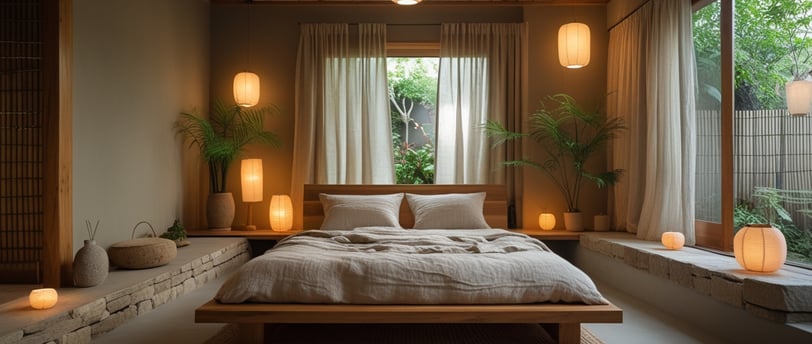

In the world of interior design, Japandi is emerging as one of the most sought-after aesthetics. A seamless blend of Japanese minimalism and Scandinavian functionality, Japandi design brings together the best of both worlds to create a space that is tranquil, balanced, and highly functional.
When applied to bedroom design, Japandi transforms the space into a peaceful retreat, perfect for unwinding after a long day. If you’re looking to revamp your bedroom with a clean yet cozy aesthetic, here’s everything you need to know about achieving the perfect Japandi-inspired sanctuary.
What is Japandi Style?
Japandi design merges the timeless elegance of Japanese interiors with the cozy, inviting elements of Scandinavian decor. The Japanese principle of "wabi-sabi" embraces imperfection, natural materials, and simplicity, while Scandinavian "hygge" focuses on warmth, comfort, and functionality. Together, these principles create an aesthetic that feels modern, calming, and effortlessly stylish.
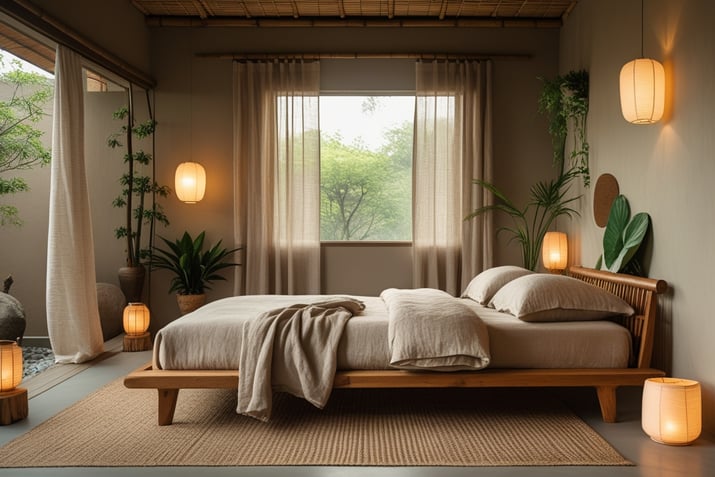

1. A Neutral and Earthy Color Palette
Japandi bedrooms rely on a soothing color palette dominated by earthy tones, warm neutrals, and muted hues. Shades like beige, taupe, soft gray, and subtle greens create a peaceful ambiance. These colors not only enhance the sense of tranquility but also complement natural materials commonly used in Japandi interiors.
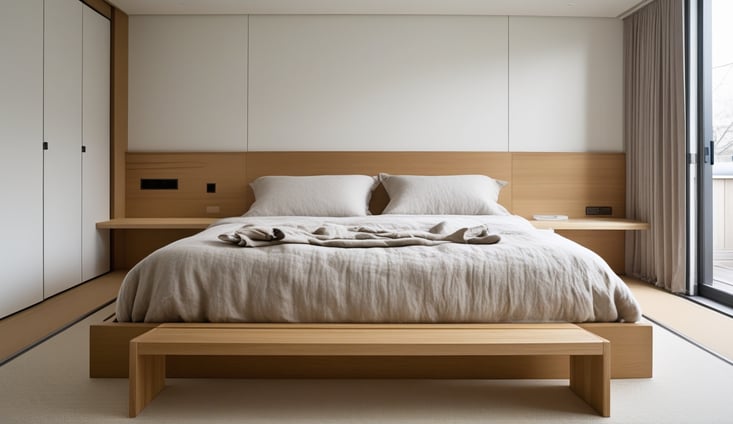

2. Low-Profile and Functional Furniture
One of the defining features of a Japandi bedroom is low-profile furniture. Inspired by traditional Japanese floor sleeping and Scandinavian practicality, furniture in a Japandi bedroom remains sleek, simple, and close to the ground. A low bed frame, streamlined nightstands, and minimalistic dressers contribute to an uncluttered and airy feel.
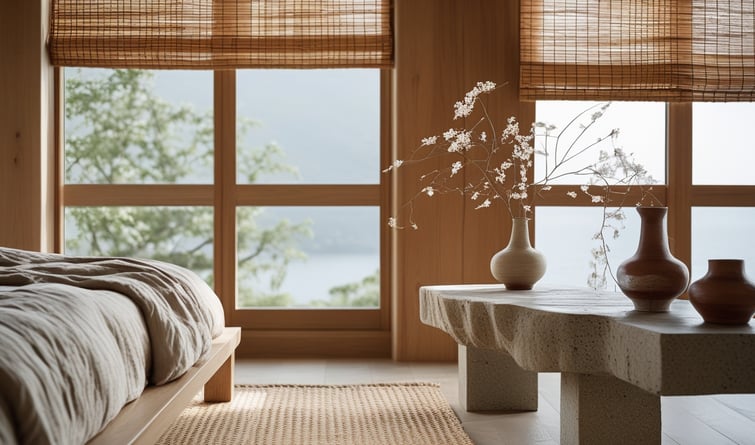

3. Natural Materials for a Timeless Look
A Japandi bedroom incorporates organic materials such as wood, bamboo, stone, rattan, and linen. These materials not only add warmth and texture but also reinforce the connection to nature—an essential aspect of Japanese and Scandinavian design. Opt for light oak or walnut wood tones for furniture, linen or cotton bedding, and ceramic or stone decor accents.
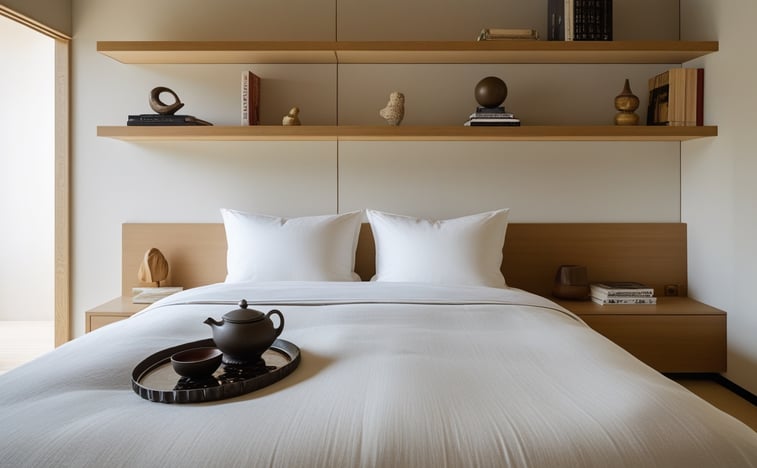

4. Decluttered and Minimalist Space
Minimalism is at the heart of Japandi design. Unlike overly decorated interiors, Japandi bedrooms embrace intentional decor—every piece should have a purpose. Open spaces, uncluttered surfaces, and well-organized storage solutions ensure that the bedroom remains serene and inviting. Decorative items should be kept to a minimum, with a focus on quality over quantity.


5. Soft, Natural Lighting
Lighting plays a crucial role in Japandi aesthetics. Harsh, bright lights are replaced with soft, warm lighting to create a calming atmosphere. Consider using paper lanterns, pendant lights, or floor lamps with fabric or frosted glass shades. Layered lighting, such as bedside lamps combined with subtle ceiling lights, helps achieve a balanced and cozy feel.
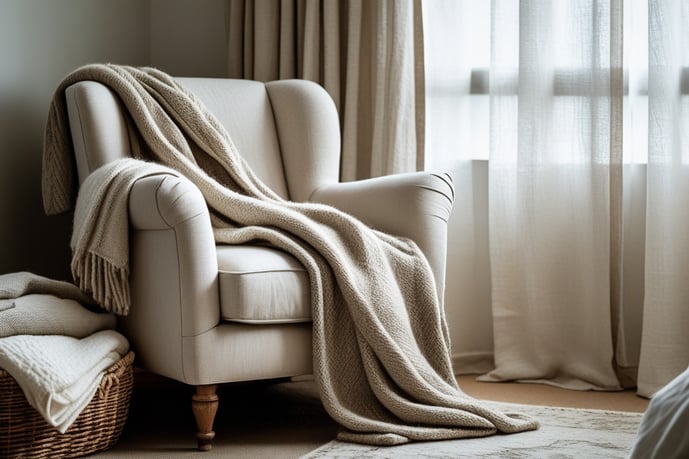

6. Organic Textiles and Cozy Accents
While Japandi design emphasizes minimalism, it doesn’t mean the space should feel cold. Layering soft textiles like linen curtains, wool throws, and textured cushions can add warmth without compromising the clean aesthetic. Rugs made from natural fibers, such as jute or wool, provide comfort underfoot while maintaining an organic, nature-inspired look.
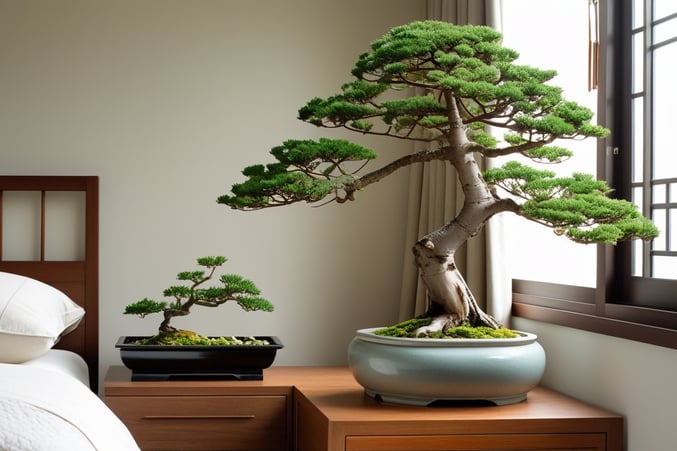

7. Indoor Plants for a Touch of Nature
Bringing nature indoors is a core principle of Japandi design. Houseplants like bonsai, snake plants, or peace lilies introduce a fresh, organic touch and enhance the serene environment. Choose simple, neutral pots that blend seamlessly with the overall decor.
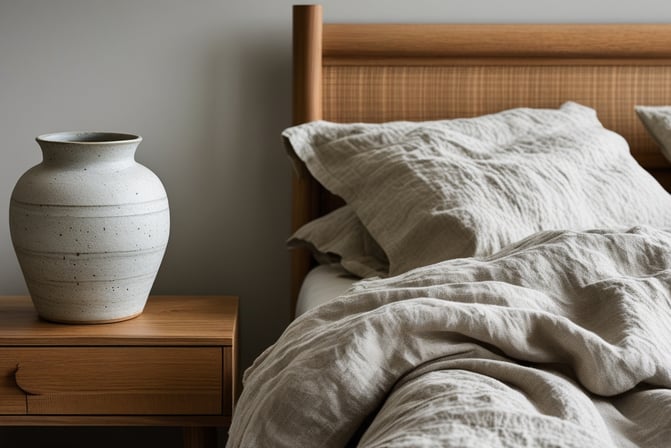

8. Wabi-Sabi Aesthetic: Beauty in Imperfection
Japandi design embraces the Japanese philosophy of wabi-sabi, which finds beauty in imperfection and the natural aging of materials. This means incorporating furniture and decor that showcase organic textures, slight irregularities, and handcrafted details. Think of a slightly weathered wooden nightstand, handmade ceramic vases, or linen bedding with natural creases—each element adds character and authenticity to the space.


9. Scandinavian Hygge: Comfort and Coziness
While minimalism is key, Japandi design also integrates the Scandinavian concept of hygge, which emphasizes warmth and comfort. This is achieved through soft, inviting textures like plush wool throws, oversized knit blankets, and ambient candlelight. Cozy seating nooks with a warm cup of tea or a book enhance the inviting nature of the bedroom, making it a space of relaxation and serenity.
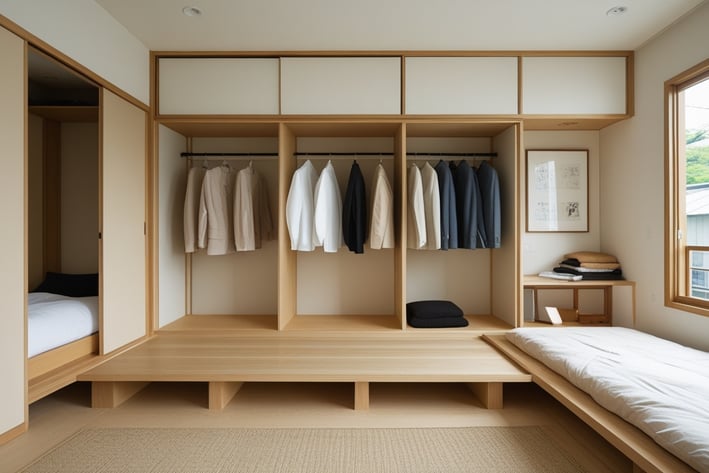

10. Balance of Open Space and Functionality
Japandi bedrooms strike a balance between openness and practicality. The layout is designed to maximize space while ensuring functionality. Open shelving, built-in storage, and multipurpose furniture help maintain order and prevent clutter. The design philosophy focuses on creating a room that feels both spacious and efficient, allowing for easy movement and a harmonious flow.
Why Choose Japandi for Your Bedroom?
A Japandi-inspired bedroom is more than just a stylish space—it’s a reflection of a mindful and intentional lifestyle. By combining minimalist aesthetics with cozy, natural elements, Japandi design helps create a bedroom that promotes relaxation, reduces stress, and enhances overall well-being.
Whether you’re drawn to the simplicity of Japanese interiors or the warmth of Scandinavian design, embracing Japandi allows you to enjoy the best of both worlds. With careful attention to colors, materials, and furnishings, you can transform your bedroom into a harmonious retreat that radiates calm and sophistication.
